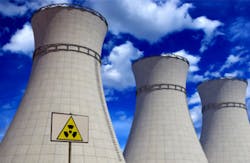The world market for valves for nuclear power plants will exceed $1.6 billion in 2014, according to the McIlvaine Company report, Nuclear Power Plant Valve Forecast and Analysis. Nuclear power plants use thousands of valves and older power plants will need to replace, repair, and in some cases upgrade valves to meet new safety standards going forward.
The Fukushima nuclear accident in Japan in March 2011 has reshaped the nuclear power industry. Some countries halted construction for further review. Others decided to phase out nuclear power. A number of countries are now again moving forward.
China is currently leading the world with approximately 26 new nuclear reactors under construction or planned for near-term construction. In January 2013, China started up the first new nuclear reactor to become commercial since Fukishima. Worldwide, there are close to 60 reactors in construction or near construction.
The total valve investment in a typical 1,000 MW nuclear power plant is in excess of $80 million, McIlvaine reports. There is some variation from design to design. Nuclear power plants of either PWR (pressurized water reactor) or BWR (boiling water reactor) design include more than 5,000 valves per installation. The valve applications include safety, control and isolation functions, among others. McIlvaine says more than 500 valves are classified as safety valves with the balance classified as non-safety. These valves reflect virtually all valve types and sizes including ball, gate, globe, butterfly, check, plug, poppet, squib, and others. Valve sizes range from fractions of a gallon per minute for chemical feed regulation to many thousands of gallons per minute for controlling reactor cooling and condenser cooling.
McIlvaine says the future for nuclear power may depend on the trajectory of continuous-improvement in reactor designs already established by the major suppliers including Areva, GE, Hitachi, Mitsubishi, Westinghouse, and others sourced from Canada, Russia, China, and South Korea. The two most prominent reactor types today are pressurized water reactors (PWRs) and boiling water reactors (BWRs). Currently, the PWR predominates in terms of installed and planned megawatts. Both reactor types have been significantly improved in terms of design simplicity and safety features relative to the early designs of the 1960s and 1970s. McIlvaine says improvement in valve design has kept pace with plant improvements.
For more information on the Nuclear Power Plant Valve Forecast and Analysis, click here.


